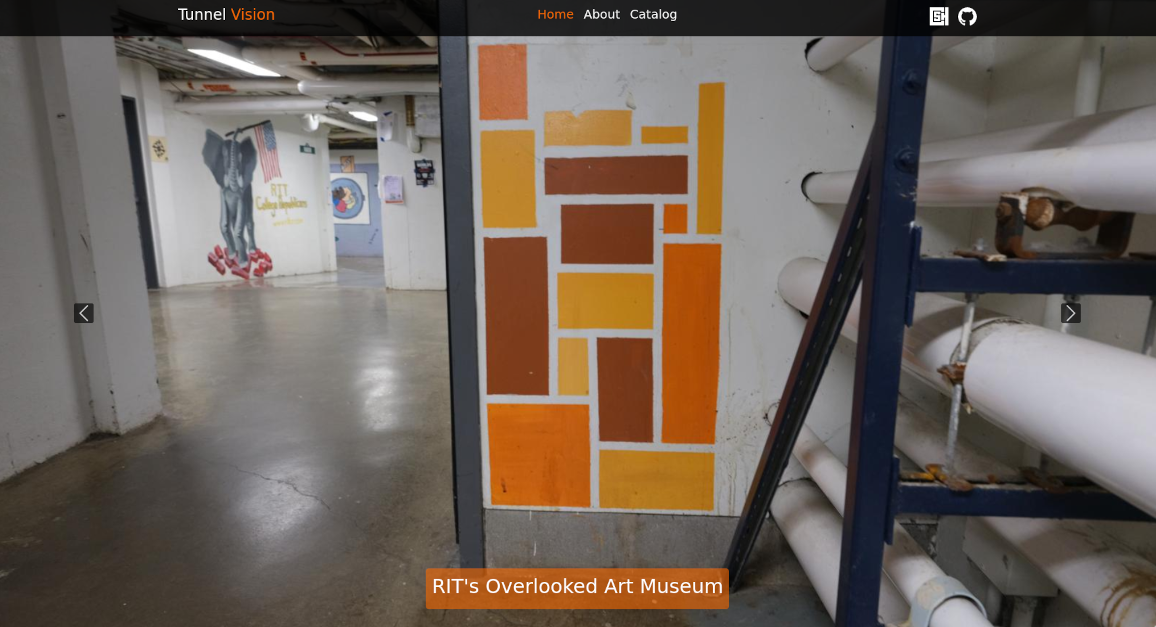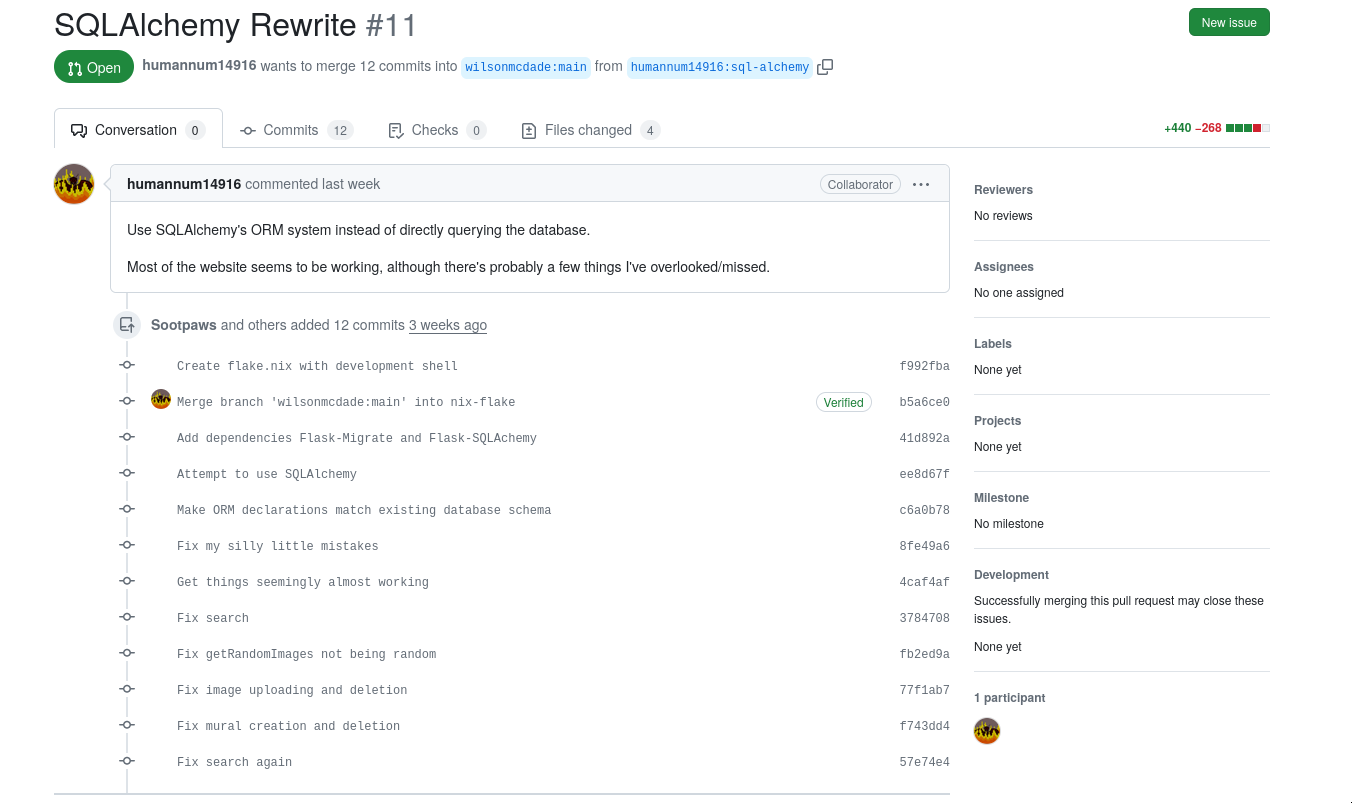Maintaining Tunnelvision
Tunnelvision
https://tunnelvision.csh.rit.edu is a catalog of RIT’s dorm tunnel murals, created by fellow CSH member Wilson McDade. He also helped found the Tunnel Art Group, or TAG (which isn’t yet an official club; we’re working on it) which is how I got involved with the project. The community is very small, Tunnel Art Group is only about 10 people and Tunnelvision itself is almost entirely maintained by Wilson. As web maintainer for TAG, I’m going to be taking over maintaining Tunnelvision after Wilson graduates next semester.

Community Evaluation
Tunnelvision is a very new and very small project, and the only available resources are the source code itself, >10-line README, and the exiting maintainer, Wilson. From an outside perspective (randomly finding the repository on Github) it definitely isn’t a great project to try and contribute to due to the lack of resources and small community.
While in my previous post I mentioned that I really enjoyed working on Clippy and the Rust community, I didn’t feel ready to start making larger changes with so little experience. Tunnelvision was a project I was already somewhat involved with, and felt a lot more comfortable jumping into.
Choosing an issue
One of the things Wilson mentioned wanting to do on the project was improve the way the backend interfaced with the database of mural data, specifically using a library called SQLAlchemy. Since I’m going to be working with the project a lot, this seemed like a good place to start. However, this was a pretty big challenge to take on - before this, I had never done work with a database before, and the backend was written in Python, a language I’m a lot less experienced with.
Preparation and setup
Before starting on the actual refactoring, I spent a few days preparing my development environment and learning about the different libraries I’d be working with. I also went through the source code for the backend to get an idea of how extensive the changes would need to be. The final step was getting the credentials for accessing the development database, which took a while to get coordinated.
Doing the refactor
The actual refactoring ended up mostly being a game of find-and-replace, looking through the code for places that accessed the database and replacing them with the SQLAlchemy equivalents. However, the code responsible for taking database responses and sending them out to the client ended up needing a lot of work, due to the new database interface not returning raw values like the old one.
Testing
Once the initial refactoring was done, I started the long journey of testing and debugging. At first, the server couldn’t even send the front page without crashing, but slowly that changed to being able to do the landing page, then the catalog page, then use the search system. The hardest part to deal with was the admin panel, since it was the only part of the site that needed to send data back to the server and modify the database. I ended up having to directly connect to the database a few times to remove improperly-deleted data, but I did manage to get it sorted out.

Submitting the changes
Now that the modifications were done, I pushed the changes to my fork and submitted a pull request. However, at this point it was finals season, and since both Wilson and I are students, merging the PR got pushed down the priority list for the time being. At this point, it probably won’t see any progress until summer.

Conclusion
This contribution was a very different experience compared to my previous work with Clippy, in both positive and negative ways. Things were definitely a lot less organized and there were fewer resources, but it was really nice working on a smaller project and really becoming part of the community. In the future I’m planning on using what I’ve learned coming into this project to make the contribution process easier for future contributers.